Welcome!
We are a lab of scientists and inventors at UC Berkeley working on building hybrid quantum systems with light-matter interfaces to advance quantum technology and probe fundamental science.
We are a lab of scientists and inventors at UC Berkeley working on building hybrid quantum systems with light-matter interfaces to advance quantum technology and probe fundamental science.
Some of our results from previous research at Harvard and UChicago.
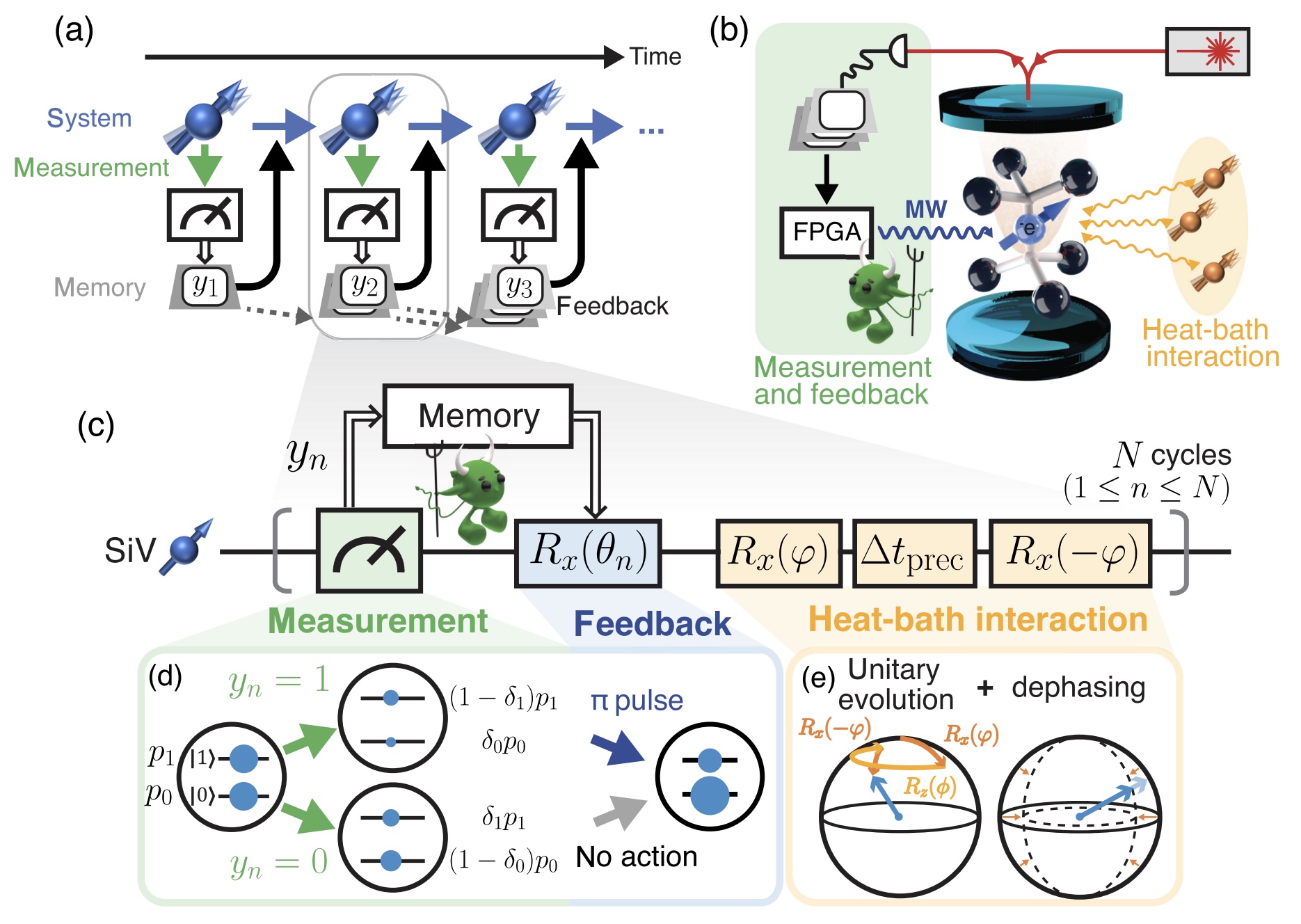
We experimentally probe entropy reduction in a solid-state quantum system by performing iterative measurement and feedback on a silicon-vacancy spin qubit coupled to a diamond nanocavity. Our platform allows us to validate generalized forms of the second law and fluctuation theorem that incorporate quantum information flow. By comparing Markovian and non-Markovian feedback protocols, we demonstrate how memory enhances accessible information and entropy reduction, extending quantum thermodynamics to explicitly include causal feedback structures. PRX
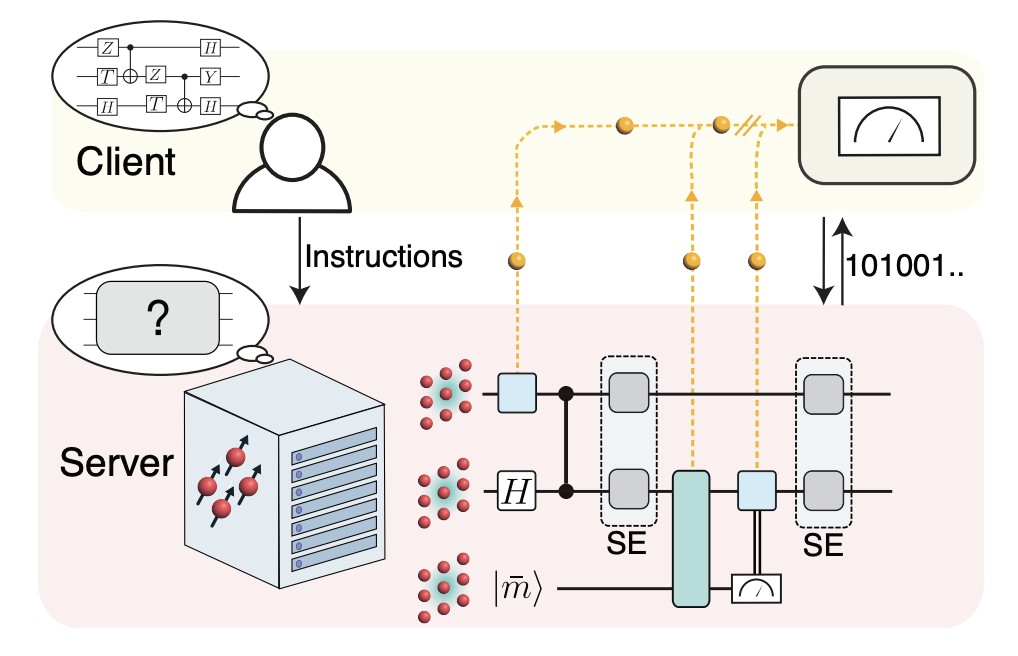
We use a recently demonstrated hybrid lightmatter approach to develop an architecture for scalable fault-tolerant blind quantum computation. By combining high-fidelity local gates on the server’s matter qubits with delegated blind rotations using photons, we construct loss-tolerant delegated gates that enable efficient algorithm compilation strategies and a scalable approach for fault-tolerant blind logical algorithms. Finally, we outline how this architecture can be implemented on state-of-the-art quantum hardware, including neutral atom arrays and solidstate spin defects. These new capabilities open up new opportunities for deep circuit blind quantum computing. Arxiv
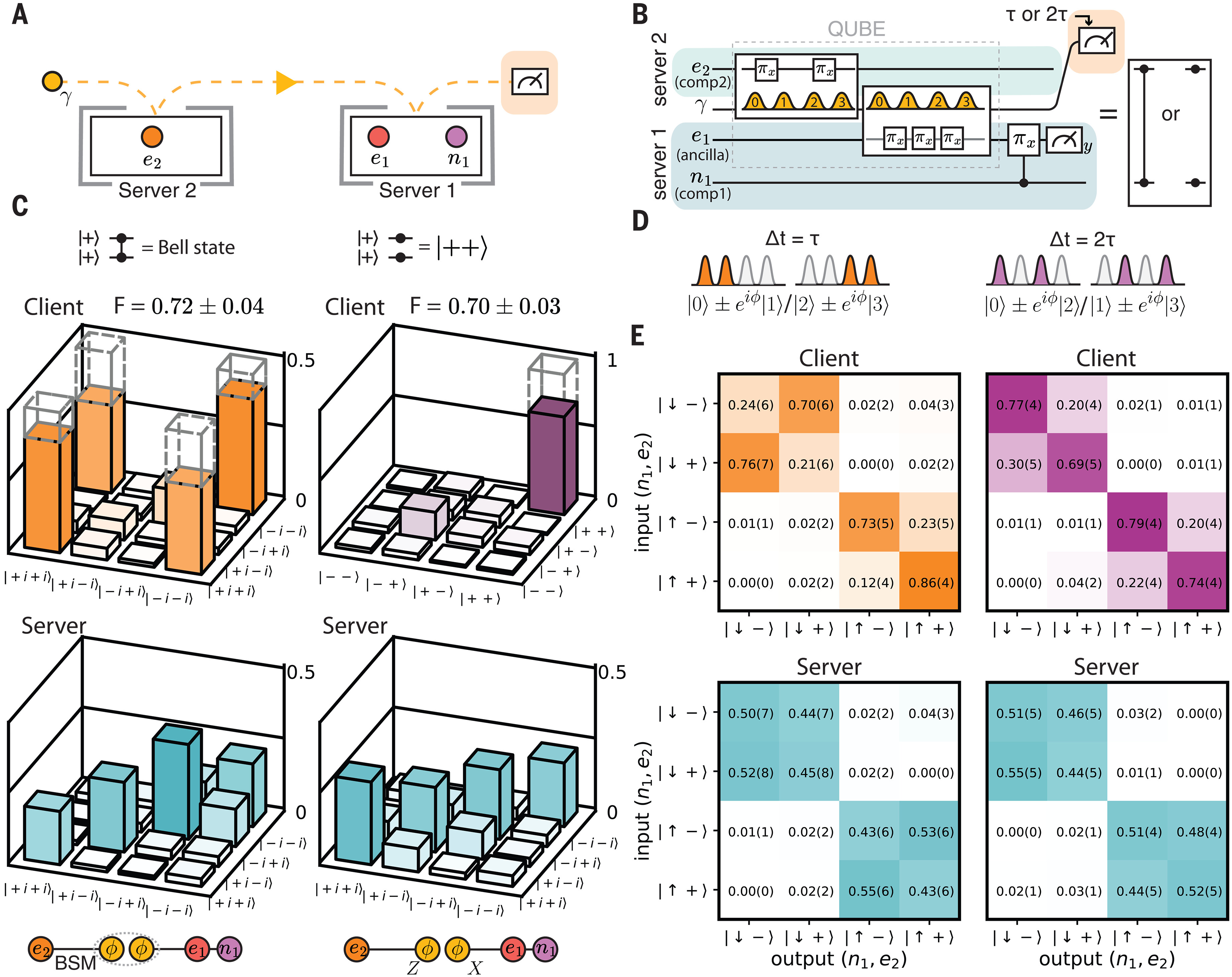
Blind quantum computing is a promising application of distributed quantum systems, in which a client can perform computations on a remote server without revealing any details of the applied circuit. Using silicon-vacancy (SiV) centers in nanophotonic diamond cavities with an efficient optical interface, we demonstrated a universal quantum gate set consisting of single- and two-qubit blind gates over a distributed two-node network. Using these ingredients, we performed a distributed algorithm with blind operations across our network. Science
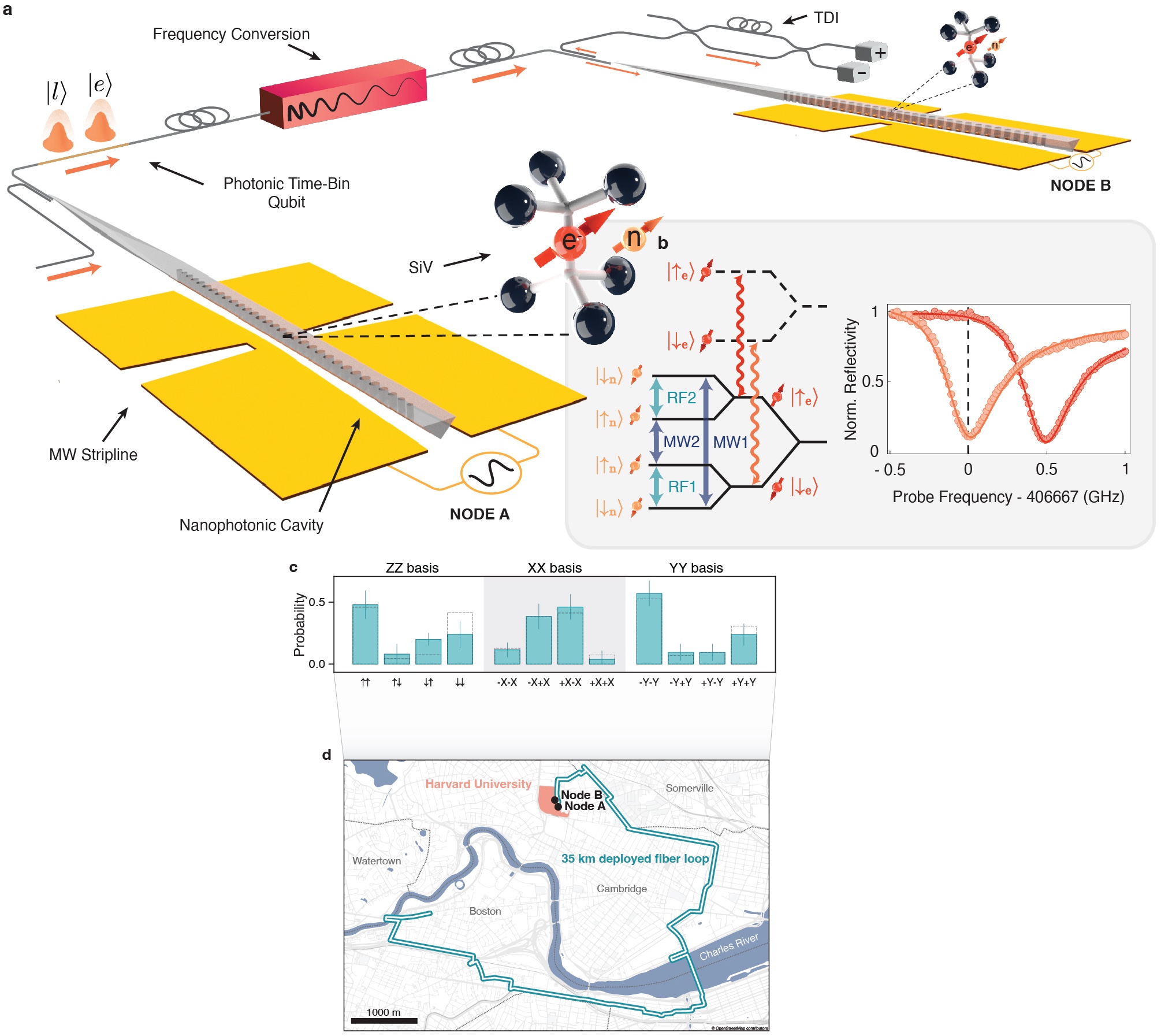
We distributed entanglement between two separate nodes of a quantum network at a rate of up to 1.4 Hz with over 80% fidelity. We demonstrated over 1 second of coherence time for entanglement between Si29 nuclear spins and successfully distributed entanglement over 35 km of deployed telecom fiber in the Boston area. Nature
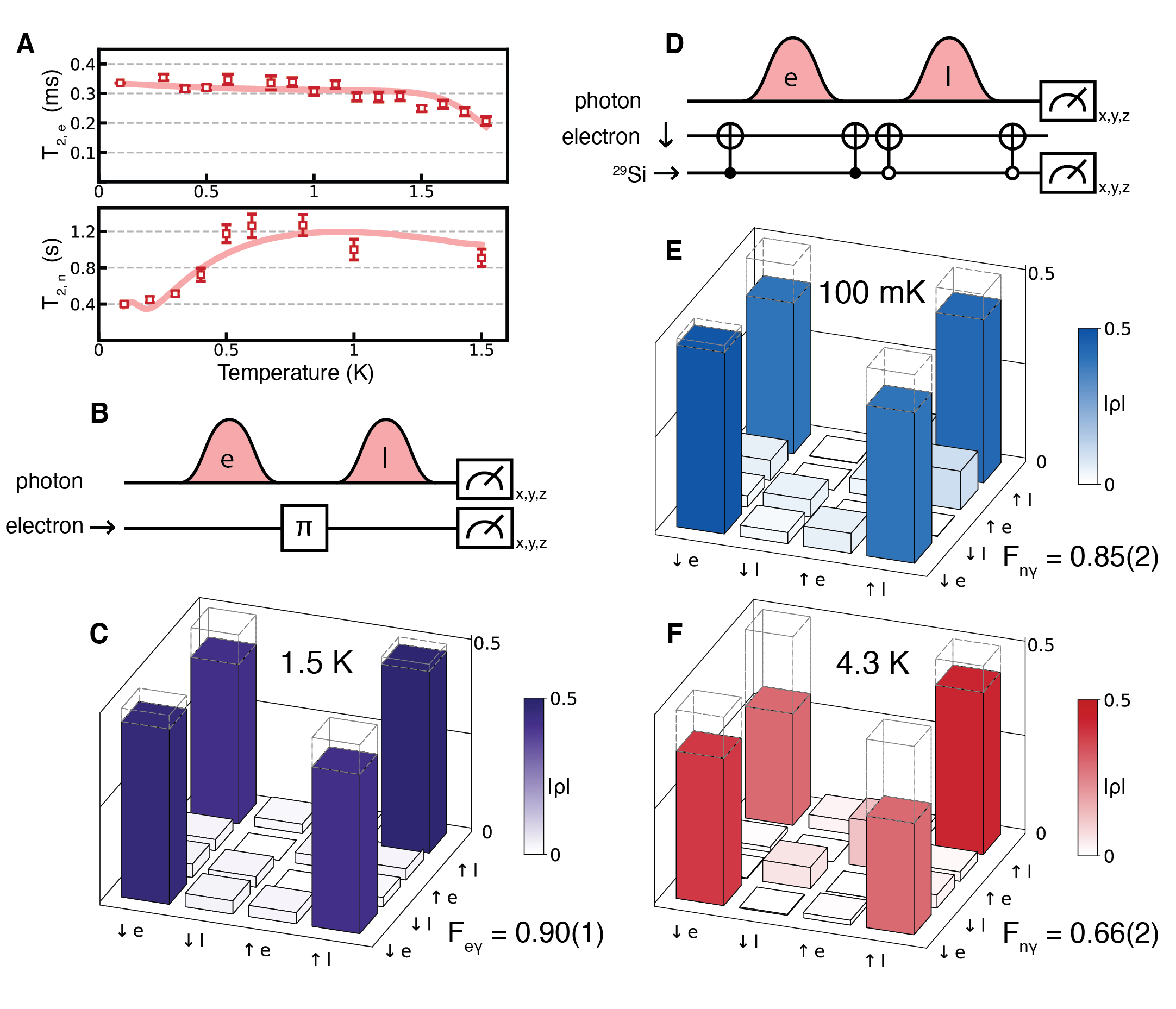
Our platform is based on Silicon Vacancy (SiV) defects in diamond nanophotonic cavities. Each cavity contains a single SiV with two qubits: electron spin, used as a communication qubit, and nuclear spin, used as a memory qubit. We demonstrate spin-photon entanglement with both electron and nuclear spins, as well as higher temperature operation for SiVs under high-strain conditions. Science
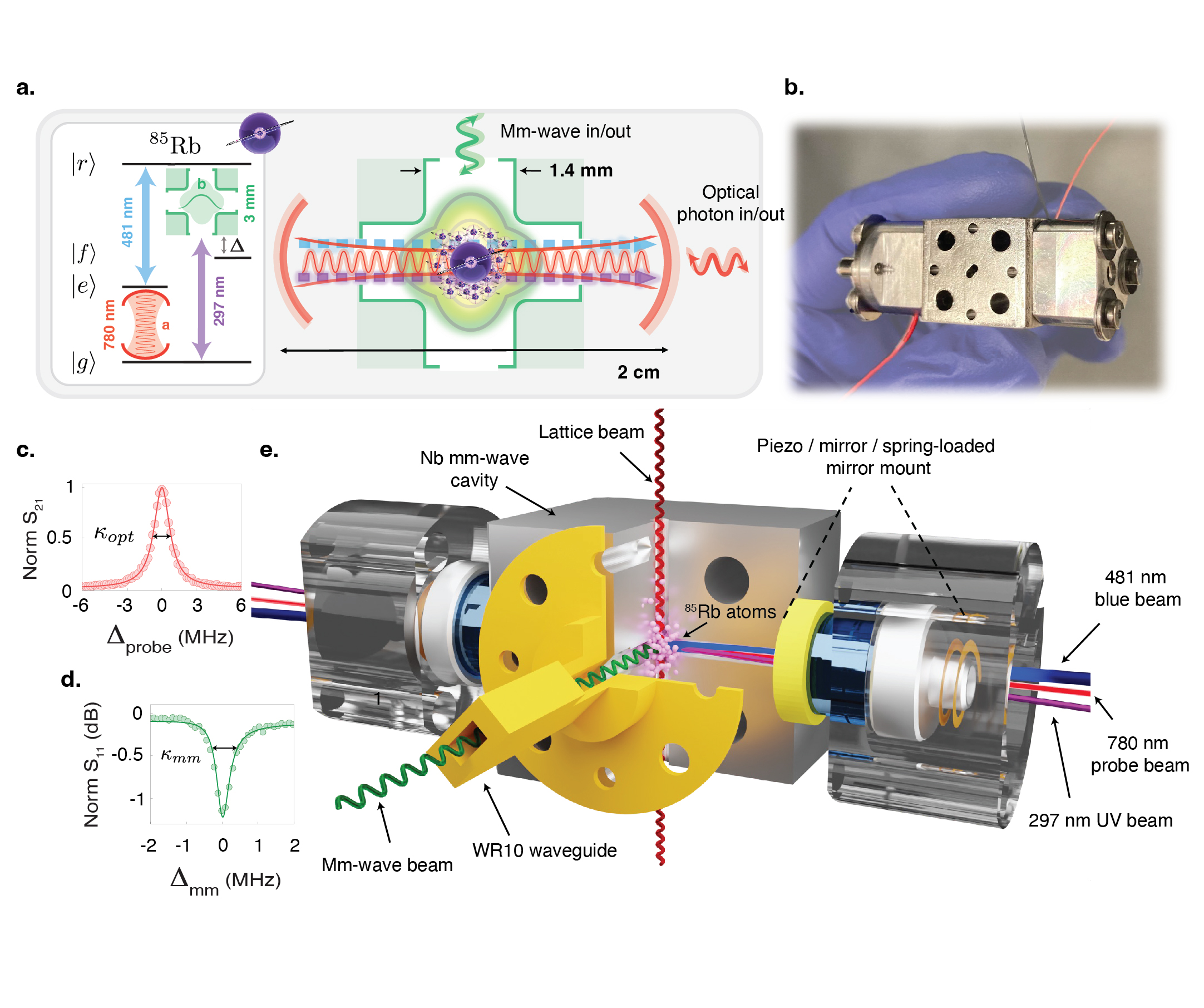
Here, we present a new hybrid quantum platform for interfacing single optical and mm-wave photons using Rydberg atoms as mediators. Using our system we demonstrate quanutm-limited transduction between optical and mm-wave photons with internal efficiency of 58% and with less than 1 photon of added noise. Nature
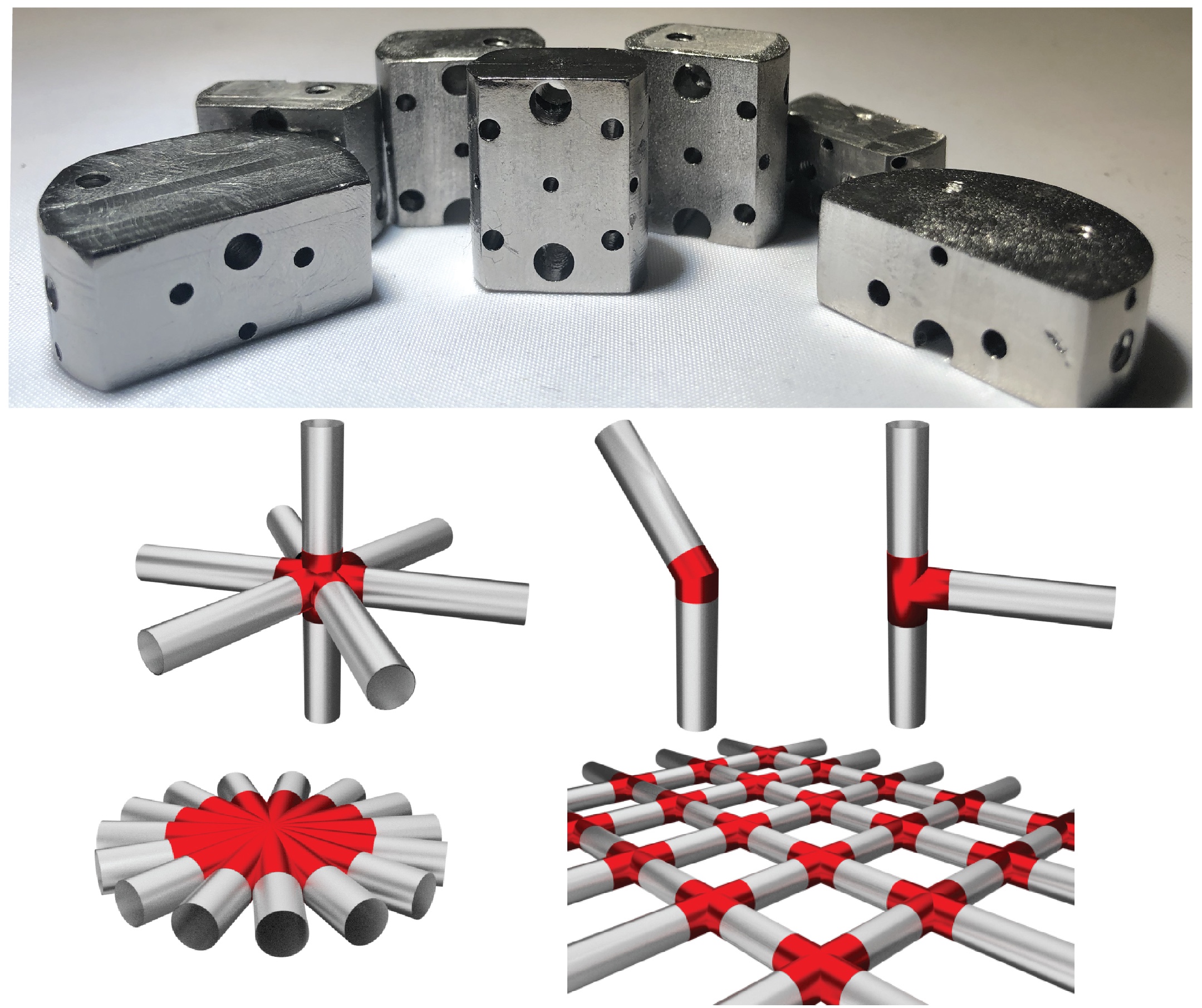
We demonstrated a high-Q 3D seamless superconducting cavity compatible with hybrid quantum experiments that require optical access, such as Rydberg atoms, trapped molecules, and hybrid superconducting circuits APL
The latest news from our lab